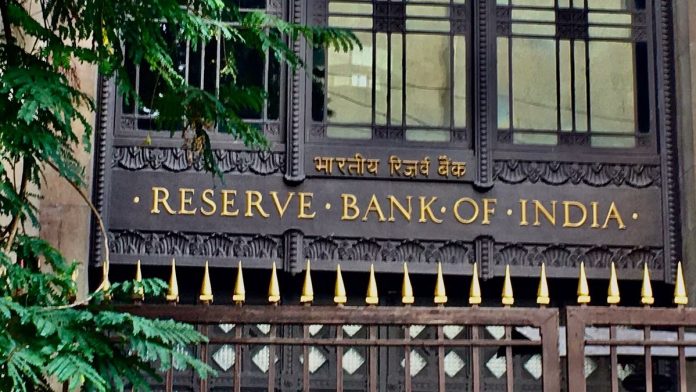In a significant development for India’s financial landscape, the Reserve Bank of India (RBI) is expected to announce its first interest rate cut in nearly five years, potentially lowering the repo rate by 25 basis points to 6.25%. This anticipated move is driven by a combination of factors, including easing inflation concerns and a slowing economy that could benefit from a more accommodative monetary policy. But what does this mean for the Indian economy, financial markets, and investors? Let’s dive deeper.
In This Article:
Why Is the RBI Considering an Interest Rate Cut?
The primary reason behind the expected interest rate cut is the decline in inflationary pressures. Inflation, particularly driven by high food prices, has been a significant concern for the RBI in recent years. However, recent data indicates that inflation has been moderating. For instance, inflation in December 2024 stood at 5.2%, a slight reduction from 5.5% in November. This easing of inflation, coupled with weak GDP growth in the September quarter, has made a compelling case for the RBI to act.
India’s economy has been facing challenges, particularly in terms of weak consumption and a slowdown in corporate profits. The RBI’s priority seems to have shifted towards addressing these concerns and supporting economic growth. With inflation coming under control, the central bank now has the flexibility to ease its monetary stance without stoking inflationary pressures.
The Role of the Monetary Policy Committee (MPC)
The decision to cut rates will be made by the newly constituted Monetary Policy Committee (MPC), under the leadership of Governor Sanjay Malhotra. This will be the first meeting of the MPC after Governor Malhotra’s appointment in December 2024, making it a crucial moment for the central bank’s monetary policy stance.
Out of the 12 financial institutions polled, nine expect the MPC to vote in favor of a 25-basis point rate cut, while three are of the opinion that the RBI will hold rates steady for now. According to Abhishek Upadhyay, a senior economist at ICICI Securities, “This would be a good time to cut rates as inflation has eased, and this would also help stimulate economic growth.”
The Economic Outlook: Slowing Growth and Weaker Consumption
Despite signs of easing inflation, India’s economic growth has been slower than expected. The GDP growth rate in the September 2024 quarter slowed to 5.4%, a sharp decline from earlier forecasts. Factors such as reduced consumer spending, lower corporate profits, and global economic challenges have contributed to this slowdown. The anticipated interest rate cut by the RBI aims to provide a much-needed boost to the economy by encouraging borrowing and investment.
Additionally, the government’s fiscal policies, as outlined in the Budget 2025, are expected to provide more room for monetary easing. The proposed fiscal deficit for FY26 is expected to be 4.4% of GDP, lower than the 4.8% deficit forecast for FY25. This fiscal prudence reassures the RBI that it can afford to cut rates without exacerbating fiscal imbalances.
The Impact on Financial Markets and Borrowers
The potential rate cut is expected to have several effects on the financial markets and the broader economy. For one, lower interest rates typically make borrowing cheaper for individuals and businesses. This could lead to an increase in consumer spending and investment, both of which are crucial for sustaining economic growth.
In the financial markets, investors are closely watching for signs of liquidity adjustments and rate changes. The Overnight Index Swap (OIS) rates are already indicating expectations of a rate cut, with the 1-year OIS trading at 6.33% as of January 31, 2025. The OIS market often acts as a barometer for future monetary policy, and these indicators point toward the likelihood of an interest rate reduction.
For retail borrowers, this means lower interest rates on loans, mortgages, and credit cards. It could also provide some relief for businesses that rely on loans for expansion, making it easier for them to access financing. However, it’s important to note that while a rate cut would ease borrowing costs, its effectiveness in boosting consumption and growth would depend on the broader economic environment and the transmission of lower rates by banks.
Global Influences and Liquidity Management
While domestic factors such as inflation and growth are influencing the RBI’s decision, global economic conditions are also playing a role. The Indian rupee has weakened by more than 3% since November 2024, and global inflationary pressures are still a concern. The RBI has been actively managing liquidity through various measures, such as conducting variable rate repo auctions and direct bond purchases.
However, some analysts, including Rajeev Radhakrishnan from SBI Mutual Fund, believe that the RBI may delay its rate cut until April 2025. They argue that the central bank needs to manage liquidity and ensure that the rate reduction has the desired impact on the economy. Moreover, global factors, including the rupee’s depreciation, may require the RBI to focus on liquidity management before initiating any rate cuts.
A Balancing Act
The RBI’s expected interest rate cut comes at a time when India’s economic recovery is showing mixed signals. While inflation is under control, the economy remains sluggish, and the central bank’s move to cut rates could be a critical tool in stimulating growth. The decision, expected to be announced in early February 2025, will have far-reaching consequences for borrowers, investors, and the financial markets.
BY – JYOTHI




